
Multiple Purpose Boats:
Tow, Dredge, and Snag Boats
These boats can act as dredge boats, and perform other services such as removing snags, or towing other boats.
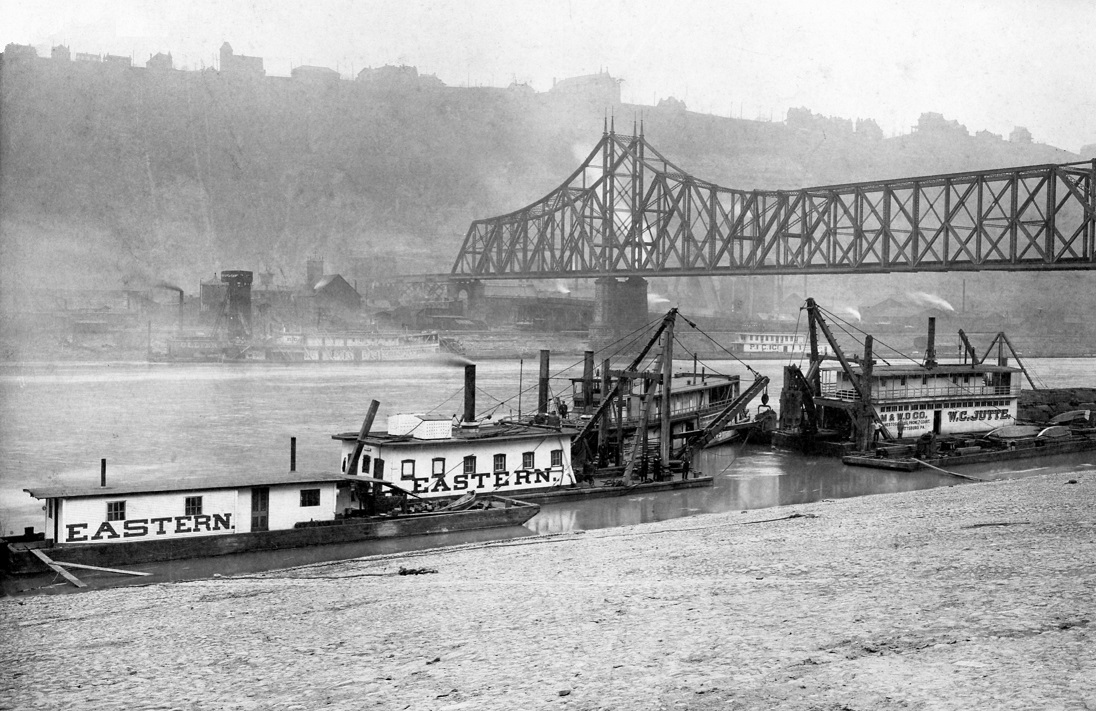
Towboat Dredge W.C. JUTTE
This is a detail from an 8 1/2 x 13 1/4 inch photo, mounted on heavy board. On the back is written "Old Steubenville Bridge."
According to online sources the bridge was built in 1865 and in 1926 a new bridge was built at the same location to replace the
old one and reused one of the piers from the original bridge. There is an Eastern Dredging Company headquartered in Boca
Raton, Florida but it is not known if the two boats on the left were from an early incarnation of that company. A twin stacked
sternwheel towboat in the center cannot be identified and the boats all appear to be gathered on the shore to initiate a dredging operation.
Steubenville is a city in and the county seat of Jefferson County, Ohio. Located along the Ohio River, the city's name was derived
from Fort Steuben, a 1786 fort that sat within the city's current limits and was named for German-Prussian military officer Baron
Friedrich Wilhelm von Steuben. Steubenville is a principal city of the Weirton-Steubenville, West Virginia - Ohio Metropolitan
Statistical Area and is part of "Greater Pittsburgh" the 20th largest combined statistical area in the United States.
Way's Steam Towboat Directory Number T2555
W. C. JUTTE (on the far right in the photo)
Sternwheel towboat
Built in 1901 at Brownsville, PA in Axton yard, 121 x 24 x 4. Built for the Jutte interests and operated a long time by Peoples Coal Co., Pittsburgh.
Capt. W. C. Jutte, for whom this boat was named, was general manager of Peoples Coal with offices in the Conestoga Building in Pittsburgh.
The W.C. JUTTE sank in the Allegheny River above Herrs Island Dam on April 4, 1907 after striking a snag. Capt. Freeman Thomas was her master
at the time. After she was raised raised the Peoples Coal sold the W. C. JUTTE to Enos Taylor Boat &Barge Co. in May, 1912 and later she was
owned by Shawneetown Sand &Gravel Co. at Shawneetown, IL. Capt. Edward Hines died on board in June, 1913. In April, 1917 the Keystone
Sand &Supply Co., Pittsburgh, bought her and later renamed her KEYSTONE.
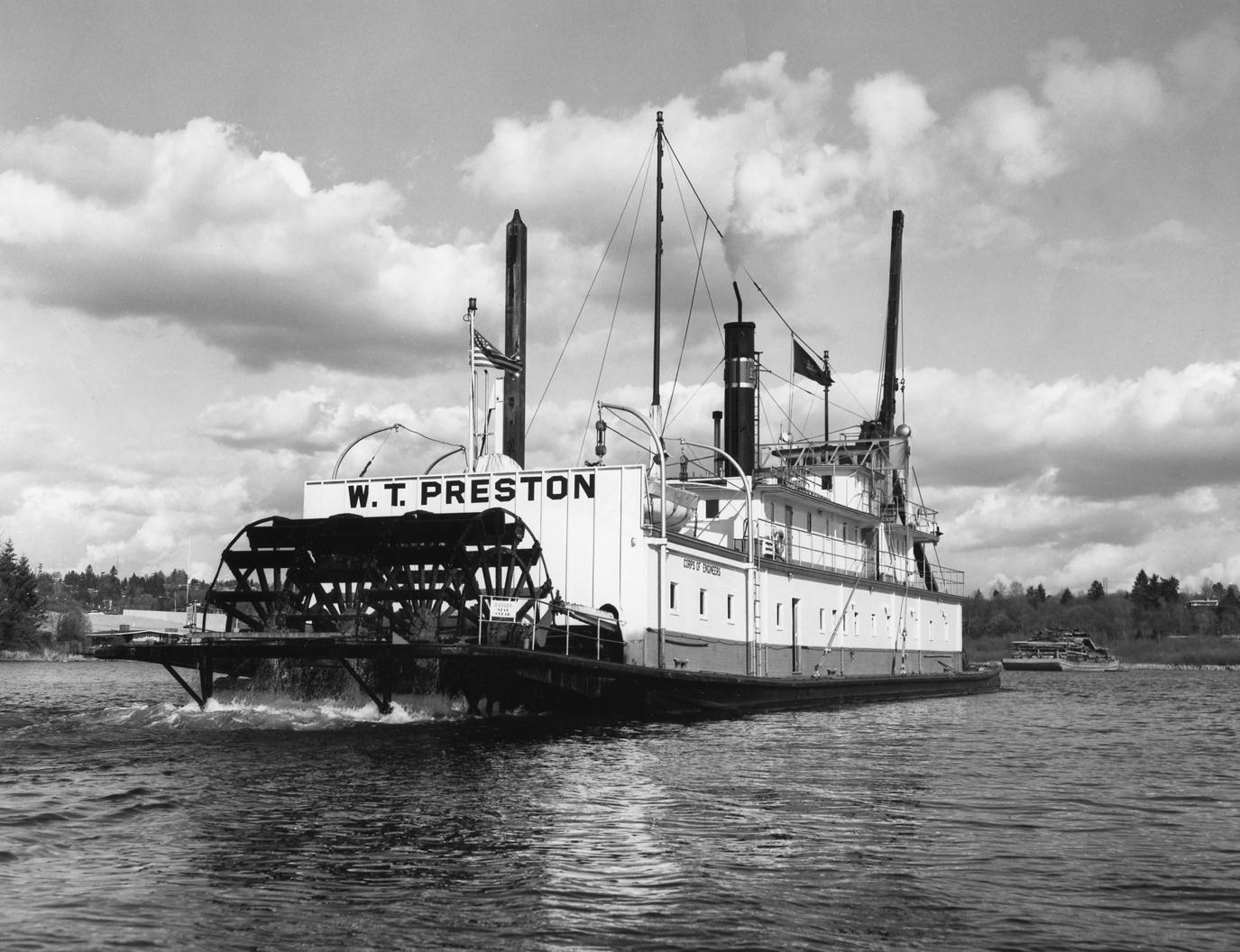
The snagboat W.T. PRESTON was built in 1929 and retired in 1981, the last sternwheeler to work in Puget Sound.
Her crew aboard the PRESTON removed navigational hazards from the bays and harbors of the Sound and from its tributary rivers.
The W.T. PRESTON was named in honor of a distinguished civilian engineer who worked for the Seattle District Army Corps of Engineers.
The PRESTON operated as far north as Blaine and south to Olympia and Shelton. She worked 11 months out of the year, retrieving thousands of snags, piles, floats and other debris, including a damaged airplane, fish boats, derelict scows, and houseboats. In addition to her snagging chores, she was used as a pile driver and icebreaker, and dredged about 3500 cubic yards of material in an average year.
By the 1960s recreational boating increased on Puget Sound, necessitating more maintenance of these wider waters. In these circumstances, the W.T. PRESTON as a shallow-draft river vessel found itself vulnerable. One noted storm with a prevailing 40-knot wind blew the boat sideways during a hair-raising passage to Port Townsend.
The PRESTON continued to run until the costs to operate and maintain the snagboat became prohibitive.
The W.T. PRESTON was placed on the National Register for Historic Places in 1979. In 1981, the Corps retired her from duty and solicited proposals to preserve the snagboat.
Impressed with the plan offered by the city of Anacortes, Washington the Corps transferred title to Anacortes in March 1983. The city allocated $40,000 to prepare a waterfront site for the PRESTON beside its old Burlington Northern Railroad Depot.
After being towed to Anacortes, the PRESTON was taken out of the water and on June 22, 1983, hauled overland to her new resting site. She was designated a National Historic Landmark in 1989.
W.T. Preston Steamboat Full Video Tour in Anacortes, WA Youtube.com
This is a scan of my favorite from a group of press photos taken on Lake Washington east of Seattle in 1970.
The camera angle, the beautiful sky & water, the perfect contrast and focus showcased the snag boat W.T. PRESTON beautifully.
While visiting Anacortes, Washington in October 2006, I was not aware that the Preston was retired there and only a short distance from an antique store . . . After leaving Anacortes (which I erroneously assumed was named after a lady named "Anna Cortez" I was not able to return. Maybe someday I'll get back up there and see the boat.
Below is an edited-down version of an online article on the Anacortes Museum & Maritime Heritage Center website: cityofanacortes.org
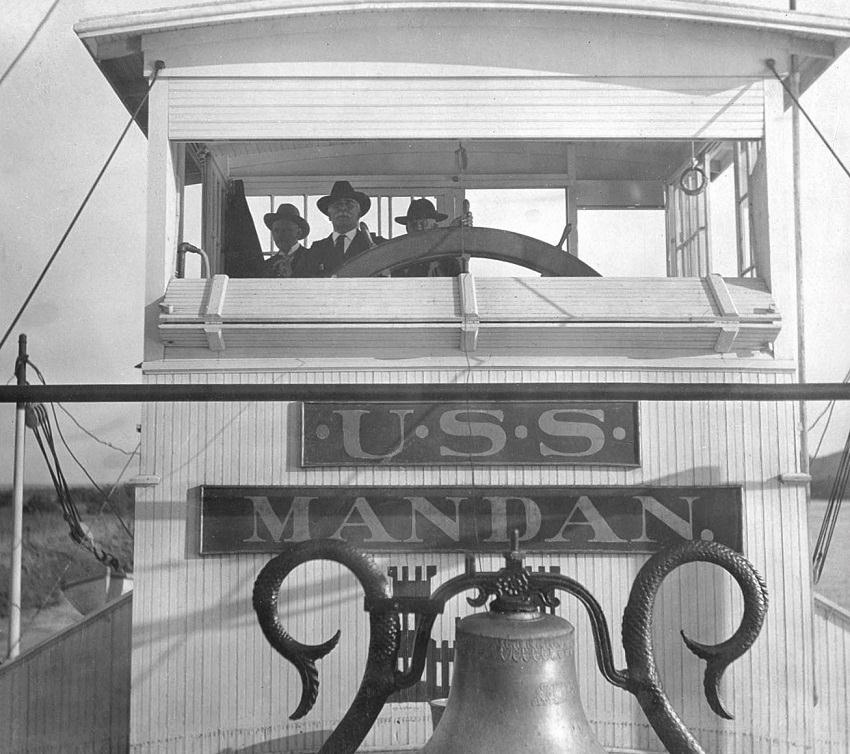
Pilot house of the U.S.S. MANDAN circa 1891 - 1925
The sternwheel snagboat MANDAN was built with an iron hull at St. Louis in 1891
for service on the Missouri River. She made a trip to Fort Benton, Montana, in 1921.
Dismantled at the U.S. boatyard, Gasconade, Mo., after 1925.
In this photo of 3 men in suits may have been company executives who came up the Missouri with the boat on an inspection tour and to take turns at the pilot wheel in order to have photos of themselves posing as Captains.
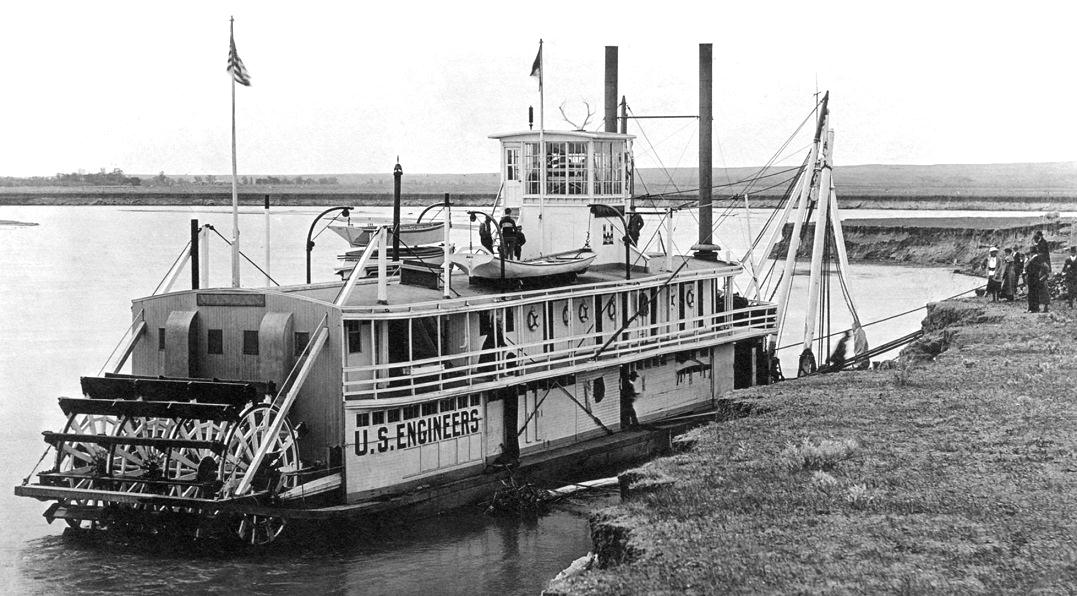
Sternwheel snagboat MANDAN
Taken at Wolf Point, Montana in 1918
Written in pen and ink on the back of the card:
"This is the government snag/dredge boat that goes from St. Louis, MO to Fort Benton, Montana once a year. It starts out in the from St. Louis and gets back just before it freezes up. It is swell inside. They always stop here and coal up both ways. We have been all through it a couple of times."
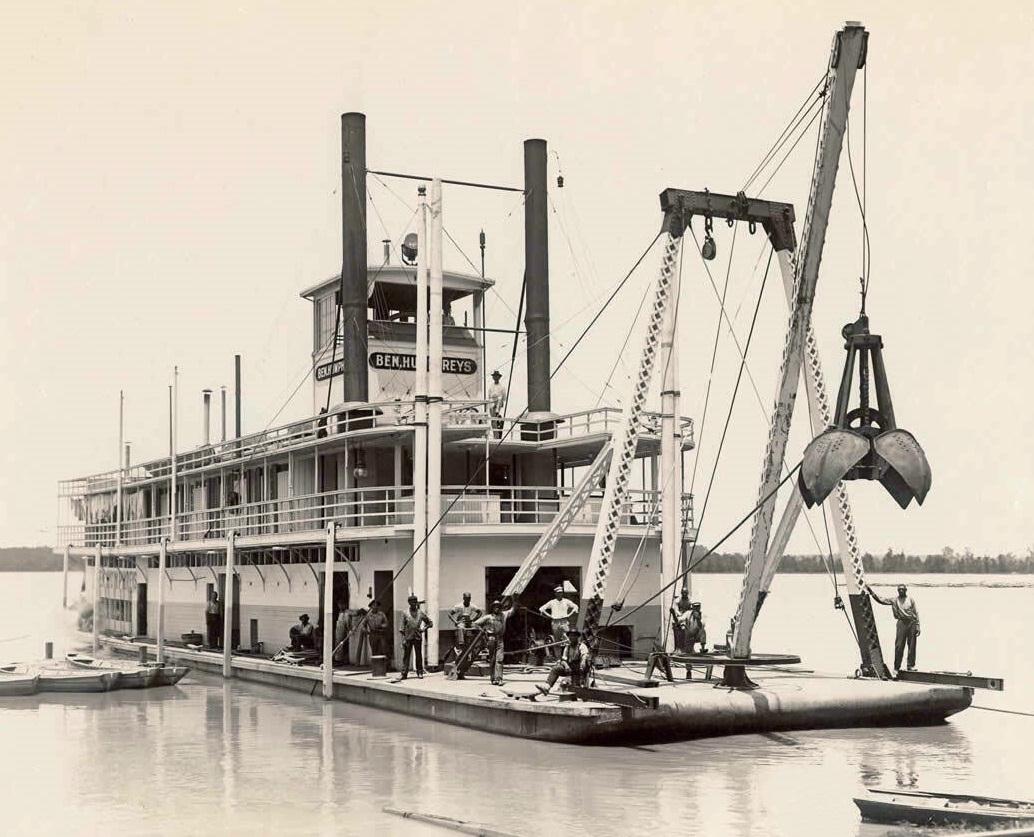
Snagboat Bucket Dredge U.S. BEN HUMPHREYS Mississippi River 1908 View 8x10 photo
eBay item number: 123779357536
$9.99
4 available / 1 sold
eBay
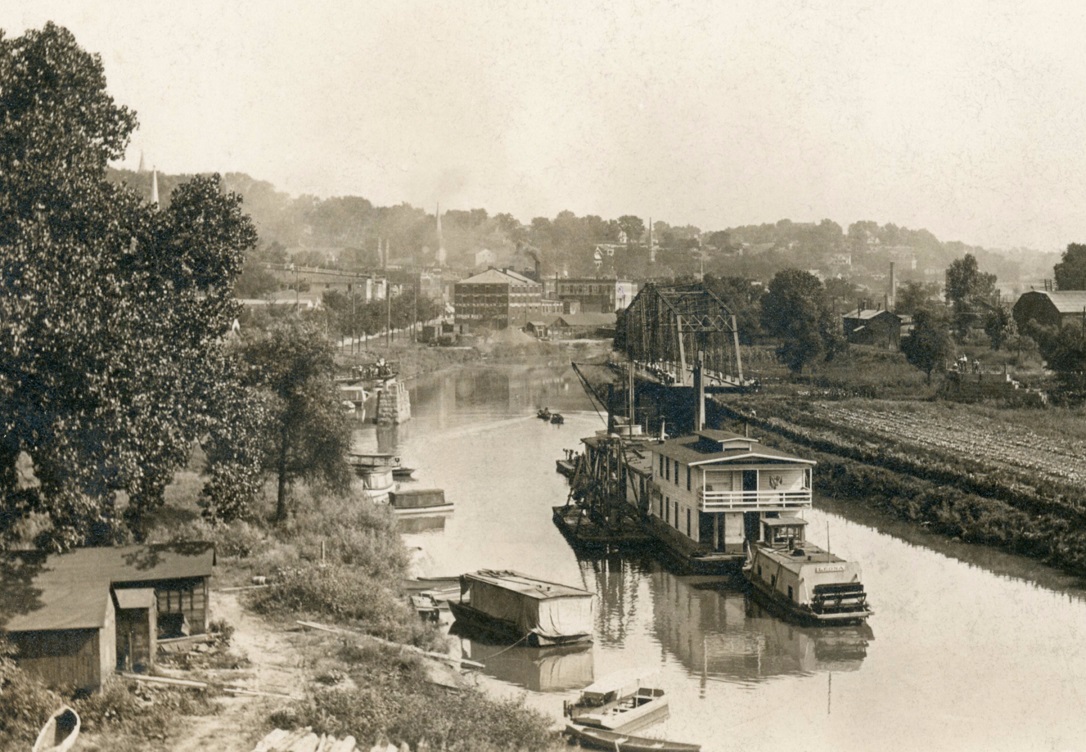
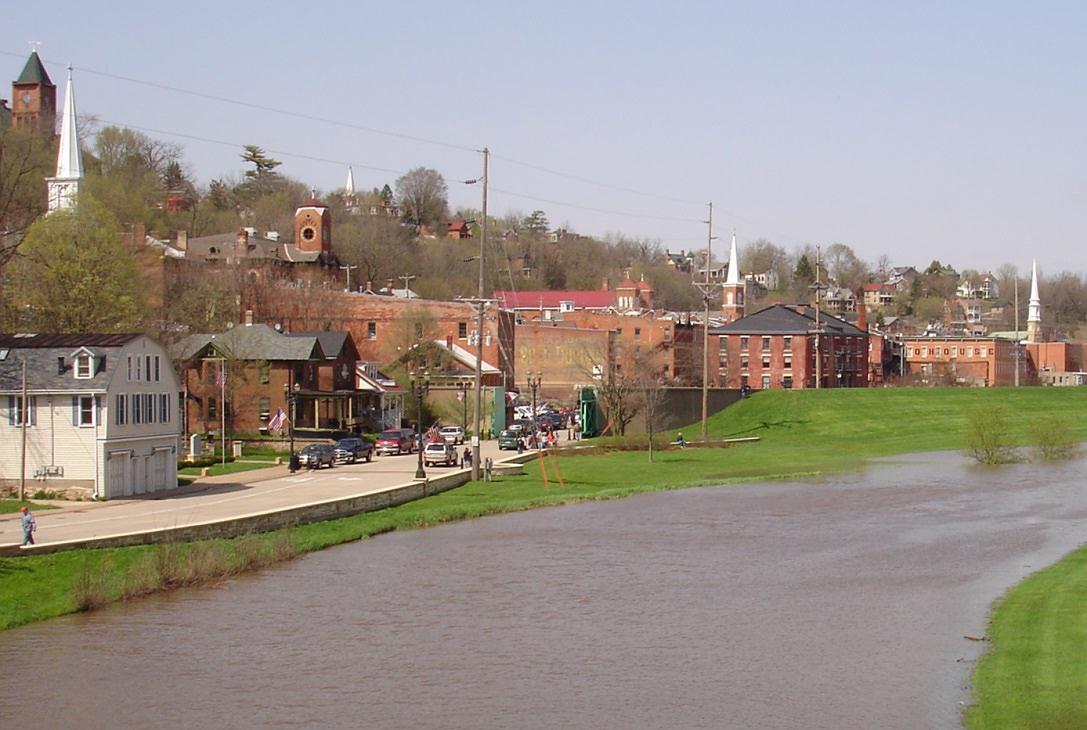
GALENA, Illinois, the Galena River and the towboat LEONA pushing a dredge upstream
Undated early 20th century photo looking north of the city of Galena, Illinois with the gas towboat LEONA pushing a dredge during one of many attempts to keep the Galena River navigable for steamboats. Eventually circumstances prevented further attempts to keep the water deep enough and navigation to Galena became no longer possible. (see excerpt from a 2005 Chicago Tribune article explains more below). Also included is a contemporary photo of Galena taken from a similar vantage point by Ivor Shandor.
About the sternwheeler LEONA from:
"Vessels owned by the U.S. and Employed in the Engineer Dep't, U.S. Army for the year ending June 30, 1913"
Page 447:
LEONA (Formerly No. 204610) Gas Towboat
10 Tons, 30 feet Long, 12 Wide, 3 feet deep
Built at Blossomburg, Illinois in 1907
Purchased by the U.S. in 1910 at Rock Island, Illinois
Estimated Value $840.00
Crew of 2
Employed in the Milan Section, Illinois and Mississippi Canal
From wikipedia:
The Galena River, also known as the Fevre or Fever River, is a 52.4-mile-long river which flows through the Midwestern United States.
The river rises in Lafayette County, Wisconsin, south of Benton and southwest of Shullsburg. It enters Illinois in Jo Daviess County to flow through the city of Galena before it joins the upper Mississippi River a few miles south and west. The river is part of the Driftless Area of Illinois and Wisconsin. This region was ice-free during the Wisconsin glaciation and underwent hundreds of thousands of years of glacial-free erosion. The river also occupies a substantial canyon. The river was originally known as "Rivière aux Fèves" and "Bean River" due to the large amounts of wild beans that grew along its banks. Following English language code-switching of the French river name "Rivière aux Fèves", the river name was corrupted and was eventually referred to as "Fever River".
The following is a brief excerpt from Alan Solomon's Chicago Tribune article BACK TO GALENA, June 5, 2005 / Copyright Chicago Tribune 2018: chicagotribune.com
"By the 1880s, Galena was no longer the busiest port on the Mississippi River system north of St. Louis, its link to the Mississippi - the Galena River - had become only grudgingly navigable, and the Illinois Central bypassed the city as a terminal, choosing, instead, East Dubuque, Illinois. More blunders, depressions and floods, the clincher flood coming in 1937, pretty much finished the place. By then, the silted Galena River was a ditch.
The city of brick and stone - 14,000 lived here in 1858 - just sat, many of its Main Street buildings boarded up, others crumbling. That's how it was into the 1960s. 'There were 18 bars in the '60s,' says Dee Levens. Why so many? 'They didn't have anything else to do.' Along came, first, urban renewal, a federally financed program with good intentions but frightening consequences for anyone with a sense of history. As downtown buildings tumbled to wreckers, some local citizens stepped in and stopped the carnage. In 1965, a preservation ordinance was passed. Four years later, 85 percent of the city was declared a National Historic District."
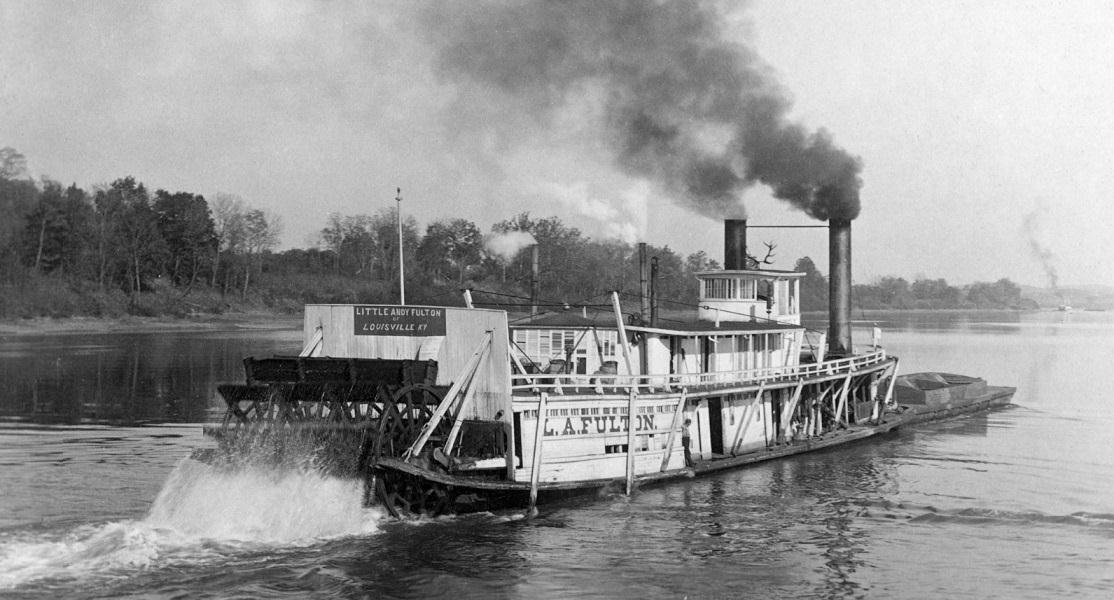
Towboat Little Andy Fulton a dredge tender 1886
From the University of Missouri Saint Louis Digital Library:
"Chartered Dredge Tender L. A. FULTON at Mustapha Island" (on the Ohio River at Wood County, West Virginia)
Photographed October 23rd, 1886
The LITTLE ANDY FULTON of Louisville, KY., at midstream near Mustapha Island in the Ohio River.
Charming panoramic riverscape. Details on the towboat LI'L ANDY FULTON are interesting. The square structure aft of the texas with what looks like 2nd hand shutters for walls may have been where the cook kept live chickens fresh in case they were needed in the kitchen.
LITTLE ANDY FULTON
1872-1891
Sternwheel Towboat
Way's Steam Towboat Directory Number- T1596
Built in 1872 at Pittsburgh, Pennsylvania
First owners were James Rees and S. Roberts and Company
Captain Henry Rothrauff was master, circa 1872
In the 1880s, she was sold to the Duffies and became the first of their fleet. Used to tow coal, sand and gravel. The name on the stern bulkhead was L.A. FULTON. After she was dismantled in 1891, her engines went to the FULTON.

With the exception of images credited to public institutions,
everything on this page is from a private collection.
Please contact Steamboats.com for permission for commercial use.*
All captions provided by Dave Thomson, Steamboats.com primary contributor and historian.
